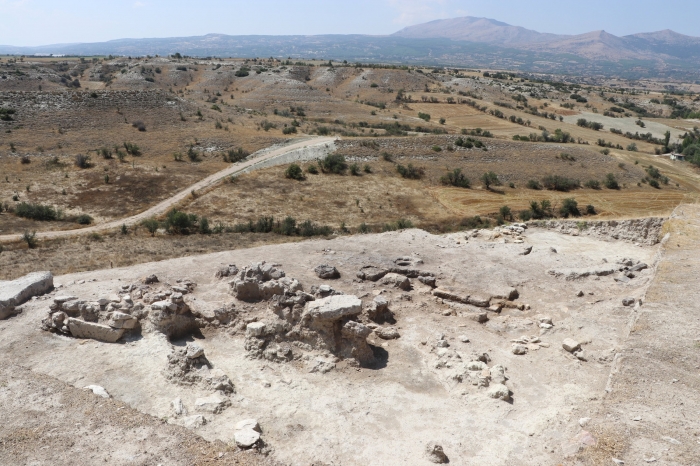Ancient 3,500-year-old grape seed discovery sheds light on western Anatolia's vinicultural past
Archaeological dig in Aşağıseyit reveals age-old grape seed
2023-09-30

Recent archaeological excavations at the Aşağıseyit Mound site in Denizli, located in western Anatolia, have led to a significant discovery. A grape seed, estimated to be around 3,500 years old, was found among other notable artifacts. The area, already rich in historical significance, offers further evidence of human settlements that date back to the Copper Age.
Under the guidance of Associate Professor Erim Konakçı from the Department of Archaeology at Izmir Democracy University, the team embarked on this excavation after initial surface surveys suggested the possibility of ancient human settlements. Among the array of findings that emerged this year, it was the ancient grape seed that captured substantial academic and media interest.
During an interaction with the media, Konakçı shed light on the mound's historical timeline. The site, according to him, was active from the Chalcolithic period and was in use up to the Roman period. The structure bears resemblances to fortresses of yore.
Delving deeper into the excavation's significance, Konakçı remarked, "The historical layers we've touched upon go back to around 1600 B.C. Preliminary surface investigations had already signposted the mound's roots to the tail end of the Chalcolithic era. Moreover, evidence suggests settlements during both the early and late Bronze Ages. We are geared up for more in-depth explorations in the upcoming years."
In addition to the grape seed, the team identified structural remnants from two phases of the Late Bronze Age, specifically between the 12th and 16th centuries B.C. These structures, inclusive of hearths and ovens, are currently under review by archaeozoologists and archaeobotanists.
Discussing the agricultural practices of the bygone era, Konakçı provided insights: "From the data amassed, it's evident that barley and wheat were staples. The discovery of the grape seed paints a clearer picture of grape consumption patterns around 1500 B.C. The western coast and central Anatolia have a storied history of grape cultivation and wine production. Grapes, as we discern, held significant value in trade between regions. This grape seed find is a testament to that larger historical narrative."
Expressing his enthusiasm about the discovery, Çal's Mayor, Fethi Akcan, emphasized the town's long-standing association with viticulture. He observed, "This discovery underscores the immense tourism potential our region possesses. With the culmination of the excavation project, we are optimistic about making the site accessible to tourists."
Founded in 2007, Vinetur® is a registered trademark of VGSC S.L. with a long history in the wine industry.
VGSC, S.L. with VAT number B70255591 is a spanish company legally registered in the Commercial Register of the city of Santiago de Compostela, with registration number: Bulletin 181, Reference 356049 in Volume 13, Page 107, Section 6, Sheet 45028, Entry 2.
Email: [email protected]
Headquarters and offices located in Vilagarcia de Arousa, Spain.